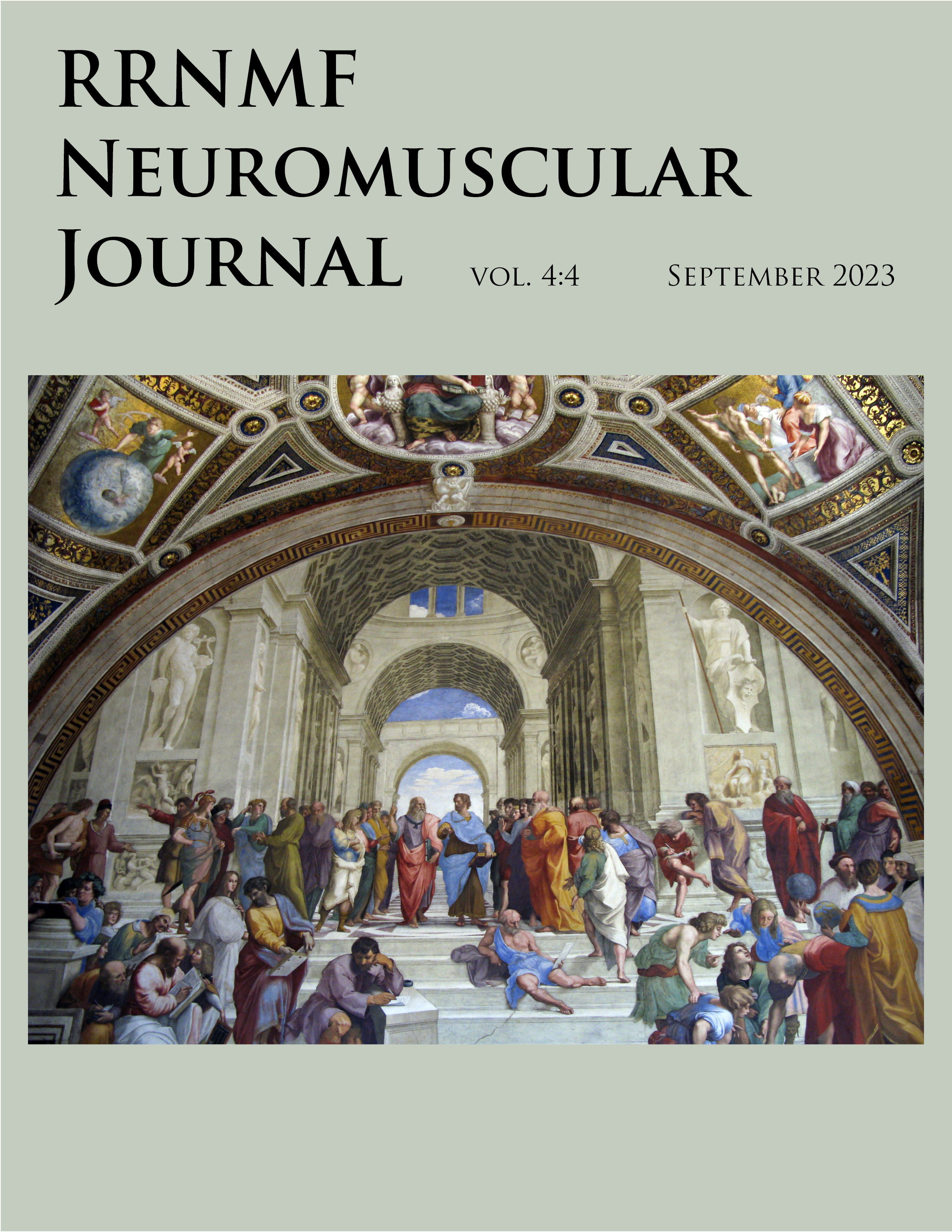Database Evaluation for Muscle and Nerve Diseases - DEMAND: An academic neuromuscular coding system
DOI:
https://doi.org/10.17161/rrnmf.v4i4.18495Keywords:
neruomuscular, database, ICD10Abstract
Background: A database which documents the diagnosis of neuromuscular patients is useful for determining the types of patients referred to academic centers and for identifying participants for clinical trials and other studies. The ICD-9 or ICD-10 numeric systems are insufficiently detailed for this purpose.
Objective: To develop a database for neuromuscular diagnoses
Methods: We developed a detailed diagnostic coding system for neuromuscular diseases called DEMAND: Database Evaluation for Muscle and Nerve Diseases that has been adopted by neuromuscular clinics at University of Texas Health Science Center San Antonio (UTHSCSA), Ohio State University (OSU), University of Kansas Medical Center (KUMC), and University of Texas Southwestern (UTSW). At the initial visit, patients are assigned a diagnostic code which can be revised later if appropriate. Fields include patient’s name, date of birth, and diagnostic code. The neuromuscular database consisted of 457 codes. Each code has a prefix (MUS or PNS) followed by a three-digit number. Depending on whether muscle or nerve is primarily involved, there are eight broad groups: motor neuron disease (MUS codes 100-139); neuromuscular junction disorders (MUS 200-217); acquired and hereditary myopathies (MUS 300-600s); acquired and hereditary polyneuropathies (PNS 100-400); mononeuropathies (PNS 500s); plexopathies (PNS 600s); radiculopathies (PNS 700s); and mononeuritis multiplex (PNS 800s).
Results: During a period of 10 years, 17,163 of patients were entered (1,752 at UTHSCSA, 1,840 at OSU, 3,699 at KUMC, 9,872 at UTSW). The number of patients in several broad categories are: 3,080 motor neuron disease; 1,575 neuromuscular junction disease; 1,851 muscular dystrophies; 633 inflammatory myopathies; 1,090 hereditary neuropathies; 1,001 immune-mediated polyneuropathies; 620 metabolic/toxic polyneuropathies; 535 mononeuropathies; 296 plexopathies; and 769 radiculopathies.
Conclusion: A detailed diagnostic neuromuscular database can be utilized at multiple academic centers. The database should be simple without too many fields to complete, to ensure compliance during busy clinic operations. This database has been very useful in identifying groups of patients for retrospective, observational studies and for prospective treatment studies including trials for Amyotrophic Lateral Sclerosis (ALS), Muscular Dystrophies (MD), Myasthenia Gravis (MG), and retrospective studies of Primary Lateral Sclerosis (PLS), chronic inflammatory demyelinating neuropathy (CIDP), etc.
Downloads
References
REFERENCES
Amato AA, Griggs RC. Unicorns, dragons, polymyositis, and other mythological beasts. Neurology 2003;61:288-90.
Van der Meulen MGF, Bronner IM, Hoogendijk JE, Burger H, Van Venrooij WJ, Voskuyl AE, et al. Polymyositis: an overdiagnosed entity. Neurology 2003;61:316-21.
Downloads
Published
Issue
Section
License
Copyright (c) 2023 Mamatha Pasnoor MD, Saud Khan MD, Carlayne E. Jackson MD, John Kissel MD, Gil I. Wolfe MD, Sharon P. Nations MD, Jaya R. Trivedi MD, Mike A. Singer MD PhD, Jeffrey L. Elliott MD, Steven Vernino MD PhD, Reddiah Babu Mummaneni , Laura Herbelin BS, David S. Saperstein MD, Gary Gronseth MD, April L. McVey MD, Mazen M. Dimachkie MD, Richard J. Barohn MD

This work is licensed under a Creative Commons Attribution-NonCommercial-NoDerivatives 4.0 International License.

